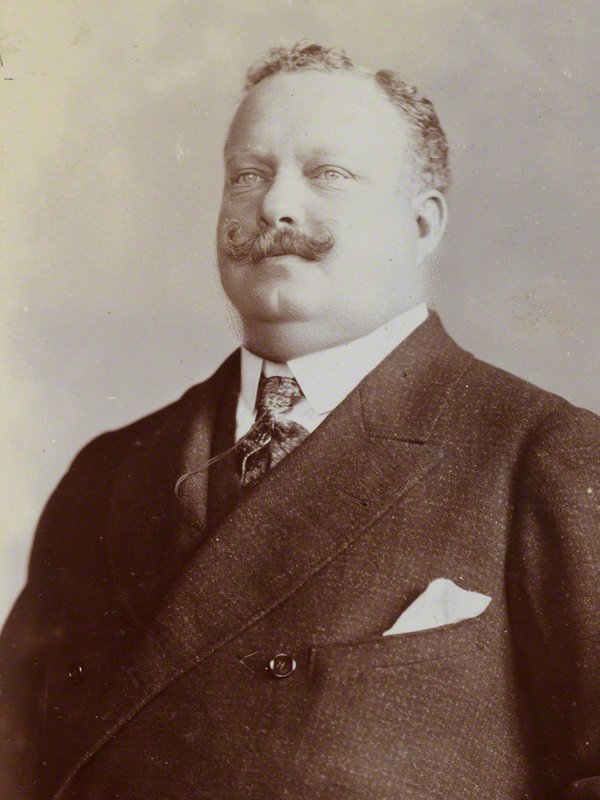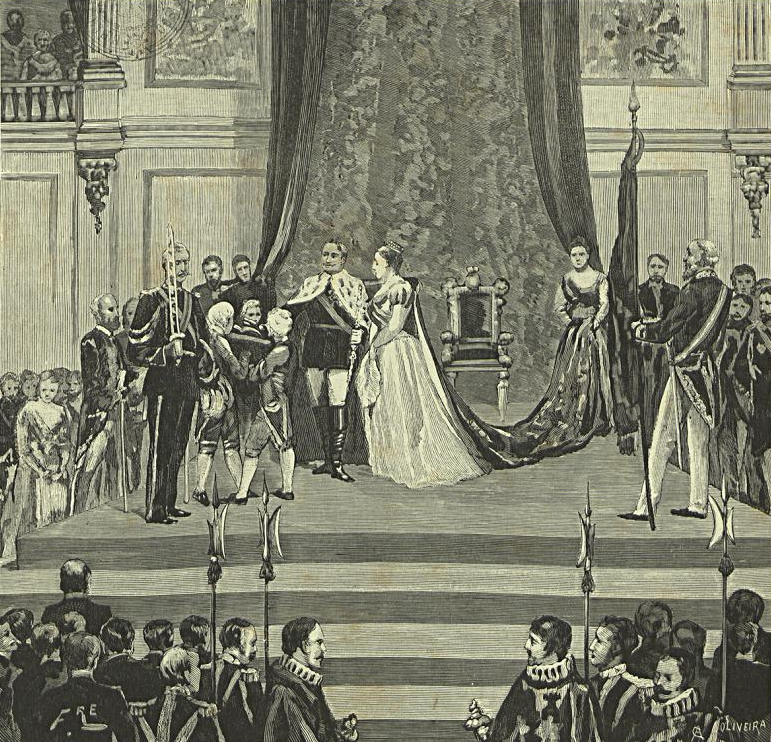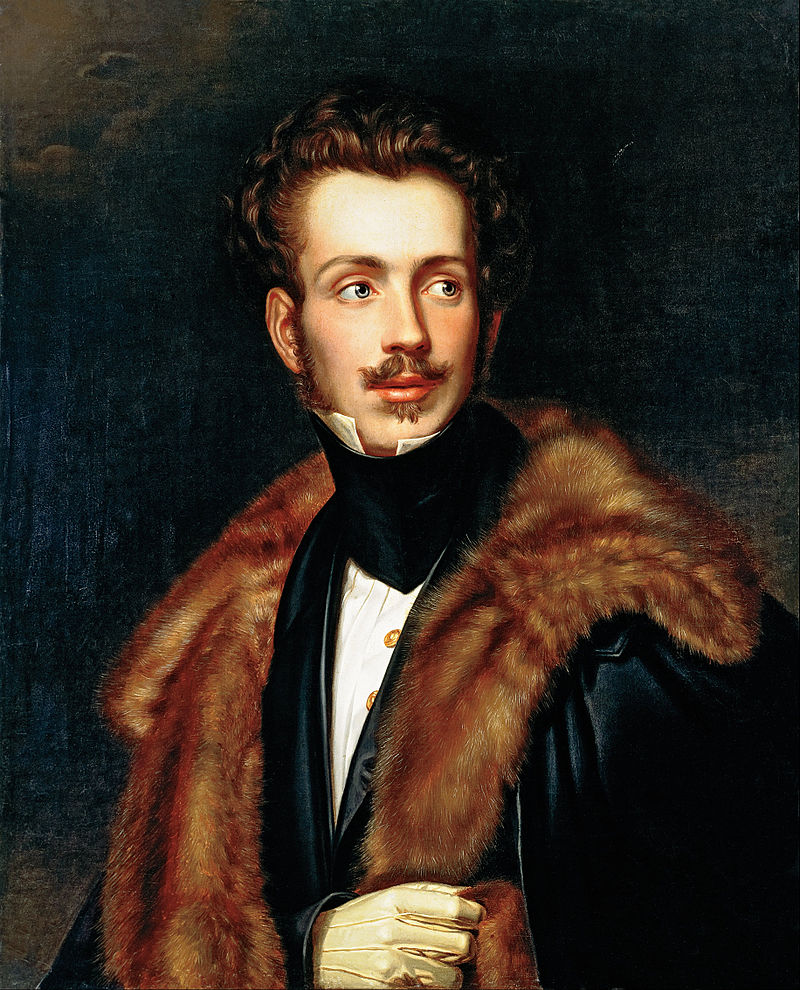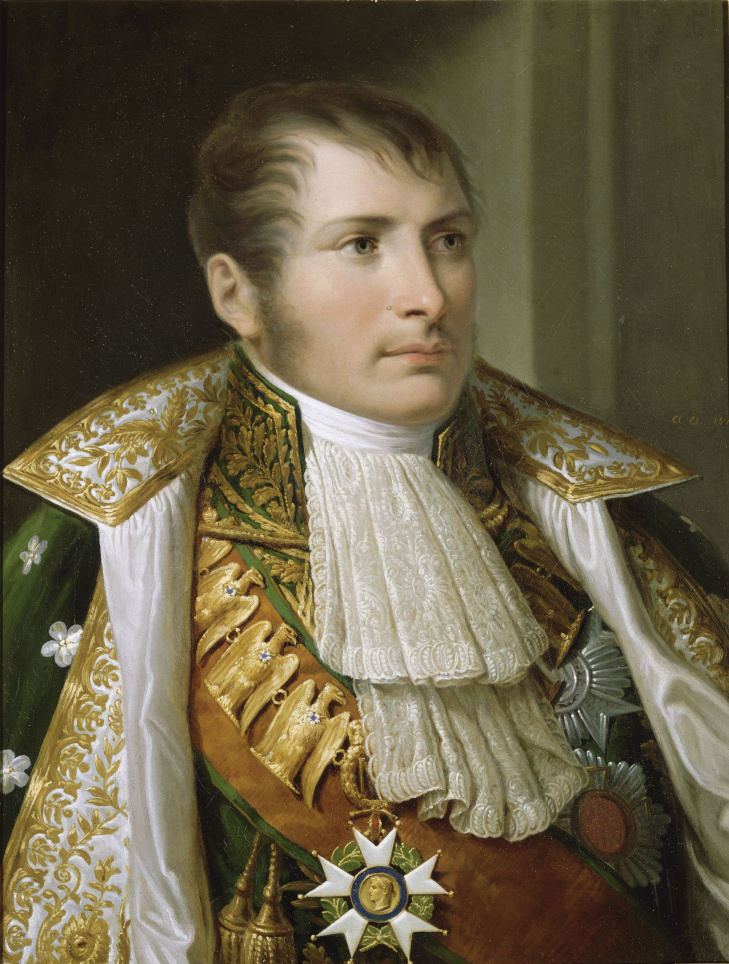by Scott Mehl © Unofficial Royalty 2016

King Carlos I of Portugal – source: Wikipedia
King Carlos I of Portugal (full name: Carlos Fernando Luís Maria Victor Miguel Rafael Gabriel Gonzaga Xavier Francisco de Assis José Simão) was born on September 28, 1863, at the Ajuda Palace in Lisbon, Portugal. He was the son of King Luís I of Portugal and Princess Maria Pia of Savoy, and had one younger sibling:
- Infante Afonso of Portugal, Duke of Porto (1865 – 1920) – married Nevada Stoody Hayes, no issue

Carlos (left) with his mother and brother Afonso, 1875. source: Wikipedia
As heir to the throne, Carlos was styled Prince Royal and Duke of Braganza from birth. When he was born, the line of succession for the Portuguese throne was quite short. The deaths of three of his uncles in 1861 had greatly diminished the male members of the family, so when Carlos was born there was a great sense of relief that the succession would continue and not pass to another branch of the family, that of the deposed King Miguel I, uncle of Carlos’ grandmother, the late Queen Maria II.
Carlos received a very strict education to prepare him for his future role. Like his father, he took a great interest in languages and oceanography. He made numerous visits to many of the other royal courts of Europe, both to expand his education and to find a bride. On one of these visits, Carlos met his future wife, Princess Amélie of Orléans. She was the daughter of Prince Philippe, Count of Paris (the pretender to the French throne), and Princess Marie Isabelle of Orléans. Carlos and Amélie soon became engaged, and they married at the Church of St. Dominic in Lisbon, Portugal on May 22, 1886. They settled at Belém Palace in Lisbon, and had three children:
- Infante Luís Filipe, Prince Royal (1887 – 1908) – assassinated along with his father in 1908, unmarried
- Infanta Maria Ana (1887) – died at birth
- King Manuel II (1889 – 1932) – married Princess Augusta Viktoria of Hohenzollern-Sigmaringen, no children

Enthronement of King Carlos, 1889. source: Wikipedia
Carlos became King of Portugal upon his father’s death on October 19, 1889, and was formally enthroned on December 28. Just weeks later, Carlos faced the first crisis of his reign. Some years earlier, Portugal had claimed sovereignty over the lands between their two colonies in Africa, Angola on the western coast, and Mozambique on the eastern coast. However, these claims caused a problem for the United Kingdom, which was trying to establish a railway from Cape Town to Cairo, spanning across the various British territories. With Portugal standing in their way, the British government issued an ultimatum on January 11, 1890, threatening to sever diplomatic ties with Portugal unless they withdrew their forces and recognized British control of the region.
King Carlos, knowing that refusal would likely lead to war, gave in to the British demands. The Portuguese people were outraged and considered it a betrayal. The rising republican movement used the situation to spread opposition to the monarchy. The 1890 Ultimatum is one of the prime factors in the downfall of the Portuguese monarchy twenty years later. Despite this, King Carlos was able to use his own very keen diplomatic skills to bring Portugal to the center of European diplomacy at the turn of the century. Aided by the fact that he was related to many of the ruling houses, he also developed close friendships with many of his counterparts, particularly King Edward VII of the United Kingdom. As a symbolic gesture toward this relationship, the first foreign state visit made by King Edward VII, in 1903, was to Portugal.
In June 1892, Portugal faced the first of two bankruptcies (the second was in May 1902), which further strengthened the Republican movement, which placed the blame solely on the monarchy. As Carlos’ reign continued, the political landscape became more volatile. In 1906, he appointed João Franco as Prime Minister, despite the misgivings of many of his family and advisers. Franco asked the King to dissolve parliament, causing a huge campaign in Portugal claiming that the country was now a dictatorship. Public support for King Carlos quickly diminished, particularly as he strongly supported Franco. It would lead to his tragic death.
On February 1, 1908, King Carlos, along with his wife and elder son were returning to Lisbon from a stay at the Palace of Vila Viçosa, in Vila Viçosa about 150 km/93 miles east of Lisbon, which he had restored some years earlier to serve as a royal residence. His younger son, Infante Manuel, had returned some days earlier to get back to his studies. Upon arriving in Lisbon, they were met by Infante Manuel, the King’s brother Afonso, Duke of Porto, and the Prime Minister. The reunited family then set out in an open carriage for the Palace of Necessidades. Crossing the Terriero do Paço (now known as Commerce Square), two assassins began to fire on the carriage. One, Manuel Buiça, came out into the square about 25 feet behind the carriage and fired a shot that struck King Carlos in the neck, killing him instantly. A second shot struck the king in the shoulder. A second shooter, Alfredo Costa, jumped onto the carriage step and fired another shot at the King. Then, both assassins set their aim on Luís Filipe, Prince Royal, who had stood up and drawn his revolver. Costa shot him once in the chest, while Luís Filipe managed to get several shots at his attacker. However, standing up had made him an easier target for Buiça, who shot him from behind, striking him in the head. Infante Manuel was hit in the arm, while Queen Amélie remained unharmed. The two assassins were quickly overcome and were killed on the spot, along with an innocent bystander who was mistaken for one of the shooters. The carriage containing the Royal Family quickly went to the nearby Naval Arsenal, where The Prince Royal died a few minutes later.
King Carlos and his son Luís Filipe, were buried in the Royal Pantheon of the House of Braganza, at the Monastery of São Vicente de Fora in Lisbon.
This article is the intellectual property of Unofficial Royalty and is NOT TO BE COPIED, EDITED, OR POSTED IN ANY FORM ON ANOTHER WEBSITE under any circumstances. It is permissible to use a link that directs to Unofficial Royalty.
Portugal Resources at Unofficial Royalty














